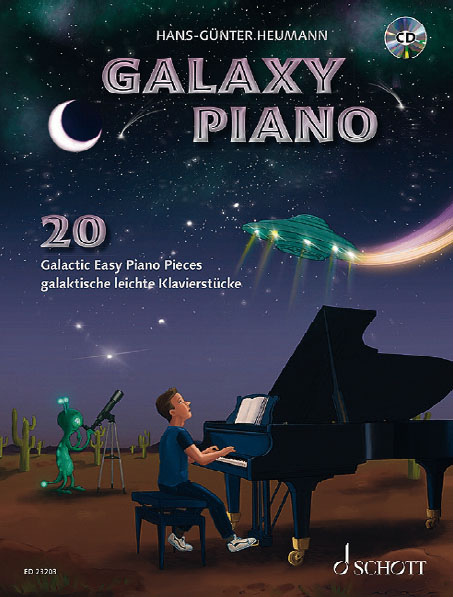
Ragtime Blues and More
Mike Cornick is one of those names that I implicitly trust. His Clever Cat books, which are perfect teaching collections for beginner pupils, and his Blue Piano series, including the popular and stylish Grade 5 piece ‘Film Noir’, are just two selections from his immensely useful and fabulous educational piano output. Following on from his previous blues collections such as In the groove and more and Blues in two and more, could he do it again?
There are 11 pieces at approximately Grade 4–6 standard in this collection of pieces in blues, ragtime, bebop, jazz, Latin and classical styles with a contemporary twist. The first piece, ‘Ragtime Blues’, was first published in Mike Cornick's Piano Ragtime. Such was its popularity that it appeared on several exam syllabuses in the UK and Australia. There are also two solo piano arrangements of the earlier duets ‘Waltz for Laura’ and ‘Be-Bop’. There is something for every taste here: you will never get bored, and neither will your pupils. ‘Ragtime Blues’ is everything a ragtime piece should be but without the giant left-hand stride piano leaps. There are lush chromaticisms and swung rhythms, but all at a Grade 4 level.
‘The Cocktail Pianist’ nails the title exactly with its sumptuous harmonies, and I would happily play it in any hotel foyer. Pupils who have always seen themselves in this role will love it. ‘A Variable Star’ is a small set of variations on ‘Twinkle, Twinkle, Little Star’ – a jazzy version compared to Mozart's classical ‘Ah, vous diraije maman’. This is a great piece to play and a provocative stimulus for pupils to compose their own variation. The ‘Sonatina for G’ is not what you would expect to see in the sonatina category of a piano competition alongside Clementi and Beethoven, but this ballad-style version is a welcome addition to the genre.
I love the ‘Intermezzo in F’, ‘Waltz for Laura’ and ‘Be-Bop’ and so did my pupils. In fact, there isn't a dud in this collection. It's a great book for teachers to pull out and use for a ‘if you liked that, you may like this’ – or for a wow piece at a concert or recital, a GCSE solo piece, or something for your intermediate pianists (and their audiences) just to play and enjoy. Yes, he's done it again.
Galaxy Piano
Hans-Günter Heumann's The Classical Piano Method is well known for its sound pedagogy and solid, thorough teaching pieces and arrangements. I must admit that I wondered if this collection could live up to its very imaginative title, or whether it would be more of the safe and reliable variety. There are 20 pieces, all different and in a variety of styles, but all with very creative titles. Playing through them I could imagine my post-Grade 1 pupils playing them, but also my Grade 2 and 3 pianists, of various ages, really enjoying them.
20 Galactic Easy Piano Pieces takes pianists on a journey to the stars where they might meet a Martian, experience a total eclipse, peer through a telescope, take a moon walk, or ride on the space shuttle. If you like June Armstrong's inspirational piano music for beginners, you will also appreciate these pieces and the other books in the series: Fantasy Piano and Mystery Piano.
The CD included has all the pieces performed on solo piano so listeners can become familiar with the pieces from the start. You can use the CD to simply listen, listen and follow the music, play along with, compare students playing – all are excellent ways to help teach and learn these pieces.
The pieces are beautifully printed on a cream background, and most are two pages long with well-spaced-out bars, making the pieces engaging and easy to read. Pedal is frequently and effectively used for spacey effects, and several pieces sound harder than they actually are – always a winning factor for my pianists.
My two stand-out favourites are ‘Light Years Away’ and ‘Ocean of Stars’. Both are slow, floaty pieces, and like many in the collection they feature the more extreme ends of the piano, which is always exciting for beginner pianists. There are effective repetitions and a wide range of moving dynamics. I really value how accessible these pieces are while remaining so beautifully individual and inventive. As I played through each piece, a pupil's name would pop into my head as someone who would love to play that composition. I can think of no better recommendation than that.









